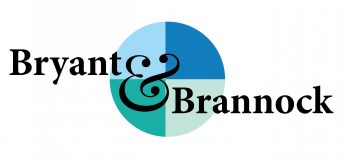Pause Before you Panic (or How to Cope With a Looney Tunes Market)

If watching the market over the last few trading days has you feeling like Wile E Coyote right after he unknowingly runs off the cliff, you are not alone. Way back on January 26, 2018 we were hitting record highs in the markets. The Dow Jones Industrial Average closed at 26,616.71 an all-time high. The S&P 500 Index closed at 2,872.87, an all-time high. In fact, the S&P 500 at the end of January had a positive monthly return for 14 out the last 15 months. The one negative month, March 2017, showed a loss (when accounting for dividends) of -0.04%. But what a difference 10 days makes.
The news, at least every channel we could find last night, was all about the all-time record point loss on the Dow Jones Industrial Average. From the close on Friday to the close on Monday the Dow fell 1,175.21. It is the biggest point loss ever, there’s no arguing that. What was frequently left out was this represents a 4.6% loss. That doesn’t even crack the top 25 of one day percentage losses on the Dow. The single largest one day percentage loss was -22.6% on Black Monday, October 19, 1987, this represented a loss of 508 points. The 12.8% loss on October 28, 1929, represented a loss of only 38 points.
Another index that we follow here that wasn’t mentioned much last night is the Chicago Board Options Exchange Volatility Index or VIX. The VIX is a measure of the volatility of prices in the overall market and is used for, among other things, pricing stock options. The VIX has been holding at historic lows and hit its all-time closing low of 9.19 on October 5th of last year. We started the year at 10.95. At the close last night the VIX hit 37.32 representing a nearly 240% increase for the year. So volatility is back, and it sure showed in the markets today.
The Dow Jones Industrial Average (DJIA) opened today down roughly 260 points from the close last night. Before the trading day was 30 minutes old the DJIA was up 358 points from the previous close. At 10:20 AM, less than an hour into the trading day we were negative again, 10:56 AM positive, 11:00 AM negative. At the close today we were up 567 points from the previous close. Looking at the chart at the end of the day we crossed the closing price 15 times today with a spread of about 1,160 points between the intraday high and low.
So what does all this mean? In the big investing picture there are generally two factors that you need to consider, these are volatility and inflation. In the short term volatility is your biggest risk. This has been made very clear to anyone whose been watching the markets over the last few trading days. Long term, the biggest risk to a portfolio tends to be inflation. If your investment portfolio is not at least keeping up with inflation you are losing purchasing power.
Keep in mind that, in the long term, your time horizon, your risk tolerance and your retirement expectations matter much more than the day to day fluctuations in the market.
If you have any questions or concerns about your current investment allocations feel free to call us.
*The index returns are drawn from Morningstar Advisor Workstation. Indexes are unmanaged and cannot be invested in directly by investors. MSCI EAFE NR USD-This Europe, Australasia, and Far East index is a market-capitalization-weighted index of 21 non-U.S., industrialized country indexes. S&P 500 TR USD – A market capitalization-weighted index composed of the 500 most widely held stocks whose assets and/or revenues are based in the US; it’s often used as a proxy for the stock market. TR (Total Return) indexes include daily reinvestment of dividends. Bloomberg US Agg Bond TR USD This index is composed of the BarCap Government/Credit Index, the Mortgage Backed Securities Index, and the Asset-Backed Securities Index. The returns we publish for the index are total returns, which includes the daily reinvestment of dividends. The constituents displayed for this index are from the following proxy: iShares Core US Aggregate Bond ETF. MSCI Emerging Markets IndexSM is a free float-adjusted market capitalization index that is designed to measure equity market performance in the global emerging markets. Russell 2000 – Consists of the smallest 2000 companies in the Russell 3000 Index, representing approximately 7% of the Russell 3000 total market capitalization. The returns we publish for the index are total returns, which include reinvestment of dividends. The MSCI Emerging Markets (EM) IndexSM is a free float-adjusted market capitalization index that is designed to measure equity market performance in the global emerging markets. As of May 2005 the MSCI Emerging Markets Index consisted of the following 26 emerging market country indices: Argentina, Brazil, Chile, China, Colombia, Czech Republic, Egypt, Hungary, India, Indonesia, Israel, Jordan, Korea, Malaysia, Mexico, Morocco, Pakistan, Peru, Philippines, Poland, Russia, South Africa, Taiwan, Thailand, Turkey and Venezuela.. The FTSE NAREIT Equity REITs Index is an index of publicly traded REITs that own commercial property. All tax-qualifies REITs with common shares traded on the NYSE, AMSE or NASDAQ National Market List will be eligible. Additionally, each company must be valued at more than $100MM USD at the date of the annual review. Equity REITs include Diversified, Health Care, Self Storage, Industrial/Office, Residential, Retail, Lodging/Resorts and Specialty. They do not include Hybrid REITs, Mortgage Home Financing or Mortgage Commercial Financing REITs. Bloomberg Sub Gold TR USD Description unavailable. Formerly known as Dow Jones-UBS Gold Subindex (DJUBSGC), the index is a commodity group sub-index of the Bloomberg CI composed of futures contracts on Gold. It reflects the return of underlying commodity futures price movements only and is quoted in USD.
